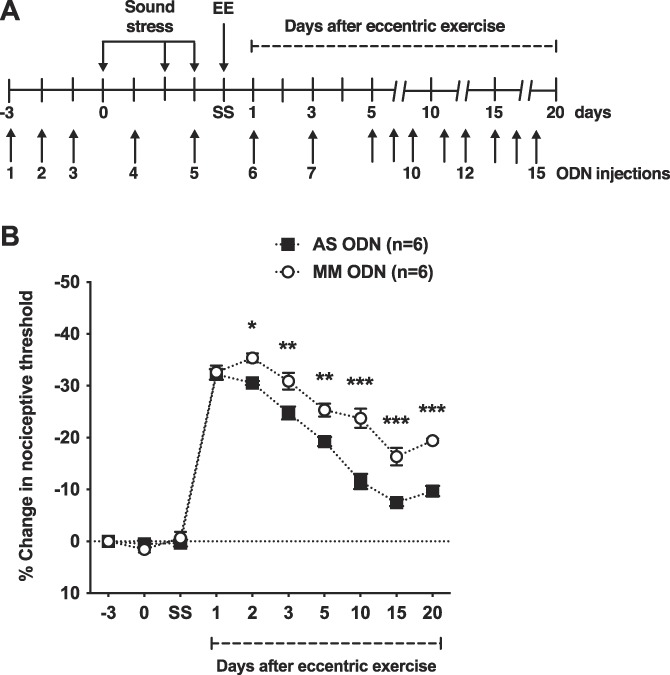Figure 4.

Nociceptor expression of the β2-AR is necessary for sound stress-induced prolongation of eccentric exercise-induced muscle hyperalgesia. (A) Timing of the experimental protocol used to assess muscle nociceptive threshold after antisense oligodeoxynucleotide (AS ODN) and mismatch oligodeoxynucleotide (MM ODN) treatments, followed by exposure to unpredictable sound stress and eccentric exercise. After measurement of baseline nociceptive threshold (time point −3), rats received daily i.t. injections of AS ODN or MM ODN, for 3 days and their nociceptive threshold assessed one day after the last ODN injection (time point 0) and submitted to sound stress. One day after the last sound stress session, rats' nociceptive thresholds were measured (time point SS) and they were submitted to eccentric exercise (EE). To provide continuous knockdown of β2-AR, after the third daily injection, ODN injections were administered every other day, for a total of 15 injections. (B) Although devoid of a significant effect on nociceptive threshold, the AS ODN treatment directed against β2-AR produced significant attenuation of the prolongation of eccentric exercise hyperalgesia produced by sound stress. Indeed, two-way ANOVA showed significant effects for treatment (F1,10 = 53.98, P = 0.0001), time (F9,90 = 331.79, P < 0.0001), and interaction (F9,90 = 10.12, P < 0.0001). The Bonferroni multiple-comparisons test revealed significant differences between AS ODN and MM ODN treated rats from day 2 to day 20 after eccentric exercise. *P < 0.05; **P < 0.01; ***P < 0.001. ANOVA, analysis of variance.
